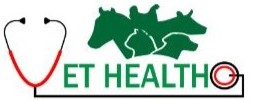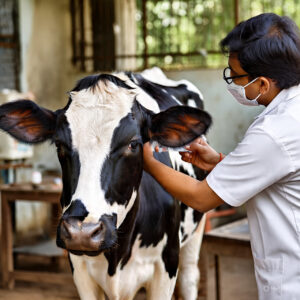Brucellosis in Cows – Symptoms, Transmission & Prevention
Brucellosis in cows is a highly infectious bacterial disease that can seriously affect livestock health and farmer livelihoods. It primarily impacts the reproductive system, leading to reduced fertility, abortions, and lower milk yield. Early detection and proper vaccination are crucial for managing this disease.
What Causes Brucellosis in Cattle?
Brucellosis is caused by the Brucella abortus bacteria. This pathogen spreads quickly among animals, particularly in poorly managed herds. Cows usually get infected through:
- Contact with aborted fetuses or birth fluids
- Contaminated feed, water, or equipment
- Unhygienic breeding practices
Symptoms of Brucellosis in Cows
- Abortion during the third trimester
- Retention of placenta
- Swollen joints or testicles in bulls
- Infertility or weak calves
- Decreased milk production
- Lack of appetite or general weakness
How Brucellosis Spreads
Brucellosis is zoonotic, meaning it can transfer to humans through unpasteurized milk or contact with infected materials. It spreads easily within herds if hygiene and biosecurity are poor. Bulls can also transmit the disease during mating.
Prevention and Control of Brucellosis
- Vaccination – Calfhood vaccination with S19 strain is highly recommended.
- Hygiene – Clean birthing areas, disinfect equipment regularly.
- Quarantine – Isolate new animals for at least 30 days before mixing.
- Testing – Routine screening through blood tests or milk testing.
- Culling – Infected animals should be culled to stop transmission.
Farmer Advice
Farmers should maintain records of vaccination, regularly consult veterinarians, and avoid using untested animals for breeding. Brucellosis is a notifiable disease in many countries, and authorities may assist in its control under government schemes.
Brucellosis in cows is a highly contagious bacterial disease caused by Brucella abortus. This infection affects reproduction in cattle and can lead to severe economic loss for farmers. It mainly causes abortions, infertility, and reduced milk production.
Infected cows often show signs such as miscarriage in late pregnancy, retained placenta, swollen joints, or reduced appetite. Male cattle can suffer from testicular infections.
How does brucellosis in cows spread? The bacteria spread through contact with aborted material, contaminated feed, or direct contact with infected animals. It can also be transmitted to humans (zoonotic), mainly through unpasteurized milk or contact with body fluids.
Preventing brucellosis in cows involves regular testing, maintaining a clean environment, and using proper biosecurity measures. Vaccination is available and is a crucial preventive step in endemic areas.
Farmers should isolate any cow showing symptoms and immediately contact a vet. Avoiding raw milk consumption and regular health checks of the herd are also key in controlling this disease.




